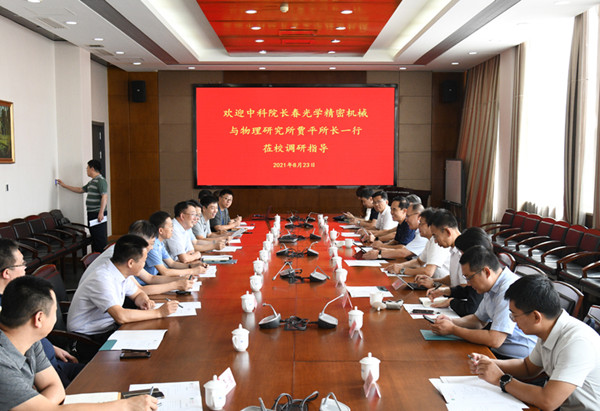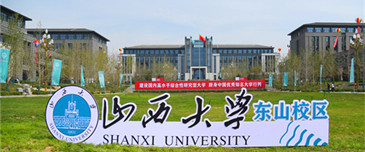SXU to partner with Changchun institute in optics, physics
Updated: 2021-08-26

A meeting between representatives of the Changchun Institute of Optics, Fine Mechanics and Physics and Shanxi University is held at the university, on Aug 23. [Photo/sxu.edu.cn]
A delegation from the Changchun Institute of Optics, Fine Mechanics and Physics – under the Chinese Academy of Sciences – visited the State key laboratory of quantum optics and quantum optics devices at Shanxi University (SXU) on Aug 23.
Zhang Tiancai, vice-president of SXU, welcomed the delegation and gave a briefing on the university's history, development status, disciplines and major scientific research endeavors.
Zhang expressed the hope that the two sides would strengthen their exchanges and work together in personnel training, scientific research and research team building, so as to promote the high-quality development of physics at SXU.
Jia Ping, director of the Changchun institute, in turn gave a talk on its research and development, as well as the institute's production in optics, applied optics, optical engineering, precision machinery and instruments.
He urged the two sides to carry out in-depth cooperation in scientific research and personnel training, as well as to combine the advantages of the SXU lab and Changchun institute to promote the rapid development of basic research and industrialization in the field of optics.
The Changchun Institute of Optics, Fine Mechanics and Physics – the first research institute in the field of optics in the country – is widely known for contributing a great deal to China's national defense capabilities, economic development and social progress since its establishment some 60 years ago.
It has cultivated groups of top scientists, developed China's first ruby laser, first large-scale movie theodolite and many other advanced instruments and equipment.
It has also participated in a number of major national engineering projects, including the manned space engineering.
INTERNATIONAL EDUCATION EXCHANGE
-
 Confucius Institutes
Confucius Institutes The Confucius Institutes are set up worldwide by the Chinese Language Council International to promote Chinese language and culture.
-
 Enrollment of Foreign Students in Shanxi University
Enrollment of Foreign Students in Shanxi University Join us and explore our wide range of study programs and enjoy a first class educational experience that makes you a part of a lively global community.

